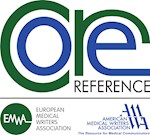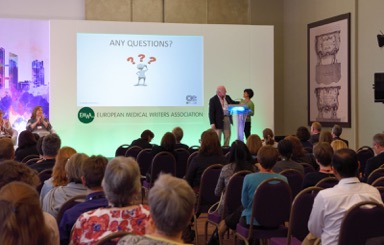
We all take medicine at some time in our lives. Have you ever wondered how your medicine got onto the pharmacy shelf?
Typically, it would have spent 10 to 15 years in development from concept to pharmacy, undergoing preclinical (non-human) testing, then early phase trials to establish its human safety, and later, its safety and effectiveness in patients. The later phase trials may have involved tens of thousands of patients.
The resulting hundreds of thousands of pages of data would have been submitted in a dossier to the medicines regulator who would evaluate the medicine. The regulator – in the case of your medicine – was convinced that it was safe and effective, and that the benefit of taking it would outweigh any possible harm to patients, so they granted it a license. Soon afterwards, your medicine appeared in the pharmacy.
If you look at the medicine package leaflet, it does not contain data about individual trial patients. You may see statements like ‘Do not take this drug if you are currently taking Drug Y (a medicine used to treat disease Z)’. How is it known that taking the drug under these circumstances is not a good idea? The supporting data are somewhere in the dossier – and these data are gathered from individual patients.
Until now, dossier readers have been pharmaceutical industry insiders and regulators. Nowadays however, the public demands transparency and accountability generally, and that includes access to the data that underpins the licensing of medicines.
How to responsibly disclose clinical trial data without compromising the privacy of individual patients?
This thirst for information does, however, create a dilemma. How to responsibly disclose clinical trial data without compromising the privacy of individual patients? Take, for example, the 48-year old Vietnamese woman with a rare blood cancer living on the Isle of Mull in the Scottish Outer Hebrides. If her trial data are rather presented as being from an Asian female in the age range 30 to 55 years, resident in Western Europe, the chances of her private circumstances remaining private are greatly increased.
The European regulator, EMA is already publicly disclosing parts of medicines dossiers – starting with the individual reports of clinical trials. Influential groups, like the World Health Organization, are effectively encouraging more of the world’s regulators to do the same. We are surely witnessing the beginnings of a tidal wave of clinical trial data disclosure.
With disclosure already here, medical writers – the industry experts that write dossiers – must comply with the new rules, and embrace the extended audience – but how can they put the requirements into practice? They must find new ways to write reports that safeguard the privacy of individual patients without ‘dumbing down’ the content to the extent that regulators cannot assess if the medicine should be granted a license. It’s an unenviable balancing act.
Imagine a scenario a couple of years from now, in which patients whose identity has been inadvertently disclosed through publication of trial data, appear in the media. They form a support group, engage lawyers, and seek redress. None of that needs to happen if the risks are widely recognized and if reporting safeguards are put in place now.
Public confidence can only be assured if transparency and privacy are suitably balanced
Science and medicine continue to rapidly evolve and technological advances will increase challenges to privacy protections.
Medical writers could work out how to write the new-style reports individually (inevitably driving up the cost of getting medicines to market, as each writer reinvents the wheel), or they could wait for detailed guidance from the authorities
Medical writers could work out how to write the new-style reports individually (inevitably driving up the cost of getting medicines to market, as each writer reinvents the wheel), or they could wait for detailed guidance from the authorities (potentially resulting in patients having their private data inadvertently disclosed in the meantime), or they could work together to develop a detailed guide and make it freely available…
I am a freelance regulatory medical writer, writing some of the documents that go into medicines dossiers. In 2014, my peers voted me onto the Executive Committee of the not-for-profit professional association – the European Medical Writers Association (EMWA). I planned to put my two year tenure to good use, so I gathered trusted and experienced colleagues to develop just such a detailed guide for medical writers.
This guide, launched on 3 May 2016, is called CORE Reference (where CORE stands for: Clarity and Openness in Reporting: E3-based). We also published a scientific paper in BioMed Central’s journal Research Integrity and Peer Review explaining exactly what we did and why we did it. We address the privacy issue, and also harness all the regulatory guidance information that medical writers must have knowledge of in order to write complete reports for EMA and the United States regulator, FDA. Consolidation of all such information into a single resource is unique.
It is not only pharmaceutical companies that must comply with the new safe data disclosure requirements, and have knowledge of the multiple and complex regulatory requirements for reporting medicinal trials. The same rules apply for anyone developing medicines – biotechnology companies, university researchers, doctors, medical research charities, and so on.
Our next challenge is to encourage these groups to use CORE Reference
EMWA had their spring conference in Munich from 10 to 14 May 2016. EMWA members warmly received the CORE Reference team, having followed news of our endeavour over two years. It was a timely moment to remind our peers that CORE Reference is finally here, and that they should help us spread the word.


If you know of medical researchers in any sector who are developing medicines, forward this article to them. It may save them time and money, and more importantly, protect the privacy of their trial patients – and that has to be good for all of us who might ever take medicines.
2 Comments